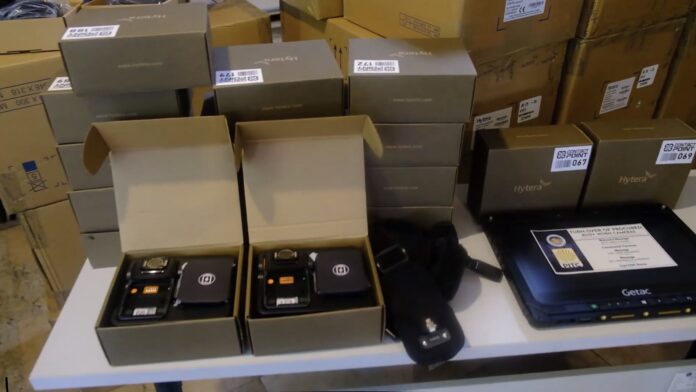
-
The use of body-worn cameras will be mandatory when exercising customs police authority and other customs operations
-
Customs Memorandum Order No. 33-2021 aims to establish uniform and clear guidelines on the use of body-worn cameras and recording devices
-
Some operations where cameras must be worn: boarding formalities, guarding duty at customs import gates, inspection of consignees’ offices, non-intrusive and physical examination of goods
The use of body-worn cameras will be mandatory in the exercise of customs police authority and other customs operations, according to a new Bureau of Customs (BOC) order.
Customs Memorandum Order (CMO) No. 33-2021 provides rules on the use of body-worn cameras as standard equipment when exercising customs police authority and other customs operations, BOC said in a statement.
The order, signed by Customs Commissioner Rey Leonardo Guerrero on August 27 and which takes effect on Oct 1, aims to establish uniform and clear guidelines for the optimum use of body-worn cameras and recording devices.
Under the CMO, the use of body-worn camera and the eventual recording of events should be mandatory in customs operations such as:
- controlled delivery operations
- guarding duty at customs import gates
- hot pursuit
- inspection of consignees’ offices
- search of persons arriving from foreign countries
- search of vehicles and other carriers, persons, and animals
- search on vessels or aircraft and persons or goods conveyed therein
Using body-worn cameras will also be required during regular customs operations such as:
- boarding formalities
- disposition of goods such as auction and condemnation of goods
- non-intrusive and physical examination of goods
CMO 33-2021 provides a list of circumstances when the cameras or devices may be turned off.
The downloading of data from the cameras and devices for safekeeping and preservation should be done within 24 hours from the time of recording by the data custodian.
Recordings are subject to a 45-day retention period from recording time, extendible upon request by an interested party when the recording is material to an investigation being conducted by authorities.
The CMO notes the data privacy rights of an individual under Republic Act No. 10173 or the Data Privacy Act of 2012 must be respected, provided the exercise of such rights does not fall under the exceptions provided by the law.
The issuance of CMO 33-2021 comes after BOC acquired 200 body-worn cameras for distribution to collection districts nationwide as part of efforts to modernize and enhance enforcement capabilities.
BOC earlier said the cameras will be used by Enforcement and Security Service personnel in performing duties such as container inspection and enforcement.
The cameras acquired by BOC can record video and voice, and can serve as a communication device between the user and the monitoring facility.
Recorded data is transferred through 17 docking stations and can be monitored remotely by the Customs Operation Center, the bureau’s central facility for the command and control of intelligence and enforcement operations of 17 collection districts nationwide.
BOC said the use of body-worn cameras in its enforcement activities is pursuant to Title II Chapter 3 (Exercise of Police Authority) of Republic Act No. 10863, or the Customs Modernization and Tariff Act.
BOC earlier said a CMO will be issued on the use of such devices in relation to Supreme Court rulings regarding the use of body-worn cameras in implementing warrants.
According to BOC’s mid-year 2021 accomplishment report, BOC’s intensified intelligence and enforcement operations, in coordination with national law enforcement agencies, resulted in the seizure of various smuggled goods with an estimated value of nearly P6.7 billion.




